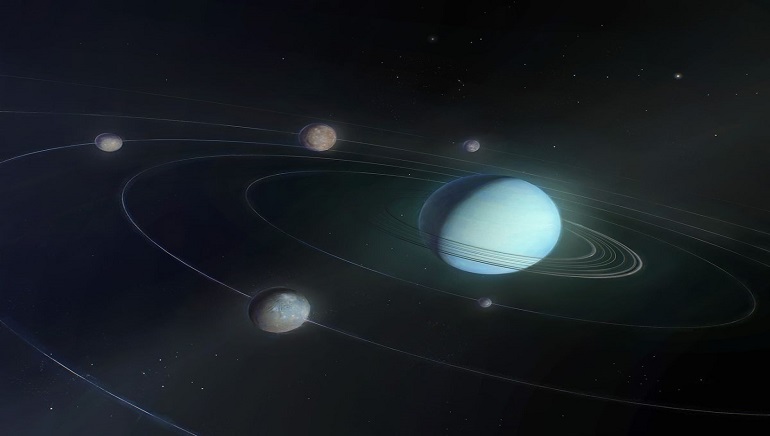Four of Uranus’ largest moons may contain an ocean layer between their cores and icy crusts, suggests a re-analysis of data from NASA’s Voyager spacecraft, along with new computer modeling. The work explores how oceans could exist in unlikely places in our solar system.
The study is the first to detail the evolution of the interior make-up and structure of all five large moons of the planet: Ariel, Umbriel, Titania, Oberon, and Miranda. The planet is surrounded by its four major rings and 10 of its 27 known moons in this colour-added view that uses data taken by the Hubble Space Telescope in 1998. A study featuring new modeling shows that four of Uranus’ large moons likely contain internal oceans that could be dozens of miles deep.
Published in the Journal of Geophysical Research, the new work could inform how a future mission might investigate the moons; the paper also has implications that go beyond Uranus, said lead author Julie Castillo-Rogez of NASA’s Jet Propulsion Laboratory in Southern California.
The study revisited findings from NASA’s Voyager 2 flybys of Uranus in the 1980s and from ground-based observations. The researchers built computer models infused with additional findings from NASA’s Galileo, Cassini, Dawn, and New Horizons (each of which discovered ocean worlds), including insights into the chemistry and the geology of Saturn’s moon Enceladus, Pluto and its moon Charon, and Ceres – all planetary icy bodies around the same size as the Uranian moons.















